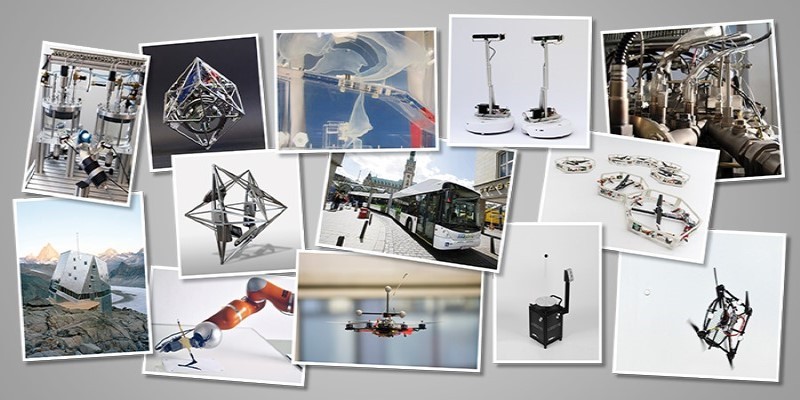
About Course
What is Dynamic Systems and Control?
This Dynamic Systems and Control course provides a great introduction to controls and mathematical modeling of mechanical systems. What does that mean? Well, you will learn how to generate equations that can be used to model a body’s motion. Think of a pendulum swinging – after this course, you will be able to model this type of motion using differential equations and matrices. On top of that, you’ll be able to analyze system stability, calculate how much error is present, use Laplace transforms to solve initial value problems, and much, much more!
Here’s some of what you will learning Dynamic Systems and Control:
- Laplace transforms
- Transfer functions
- Response equations
- Equations of motion of mechanical and electrical systems
- First-order response
- Second-order response
- State-space representation
- Block diagram reduction
- Stability and Routh’s Criterion
- Steady-state error analysis
- Root locus
Who should enroll?
This course is perfect for you if:
- you are a current student in a similar class and are needing additional examples/explanations
- you are studying for the Fundamentals of Engineering exam and need a review of system response and block diagrams
- you are just curious and want to learn something new
Who this course is for:
- Students taking a university-level System Dynamics and Controls course
- Graduates preparing for the Fundamentals of Engineering exam
- Anyone who wants to learn how to mathematically model a body’s motion
Course Content
Dynamic Systems and Control
-
Bode Plot Phase Lead Compensation
00:00 -
Control Design Using System Type
00:00 -
Controller Design Using Error Constants
00:00 -
Introduction to System Type
00:00 -
Stability Analysis Using the Routh Array: Special Cases
00:00 -
Stability Analysis using the Routh Array
00:00 -
Introduction To Stability
00:00 -
Sensitivity Analysis
00:00 -
Step Disturbance Rejection And Tracking
00:00 -
Block Diagram Reduction Example
00:00 -
Block Diagram Reduction Introduction
00:00 -
Steady State Response
00:00 -
Introduction to PID Control
00:00 -
Magnitude And Phase Of A Transfer Function
00:00 -
Introduction to Root Locus
00:00 -
Bode Plot Gain Compensation
00:00 -
Bode Plot Analysis
00:00 -
Bode Plot Sketching
00:00 -
Bode Plot Introduction
00:00 -
Root Locus Lead Compensation Example
00:00 -
Lead Lag Root Locus Introduction
00:00 -
Root Locus Gain Compensation
00:00 -
Root Locus Sketch: Third Order Example
00:00 -
Root Locus Sketch: Second Order Example
00:00 -
Root Locus Sketching Rules
00:00 -
Calculating K From The Root Locus
00:00 -
Step Response Performance Specifications Of Second Order Systems
00:00 -
Step Response Performance Specifications
00:00 -
Classifying Second Order Systems
00:00 -
Modeling Fluid Flow Between Tanks
00:00 -
DC Motor Modeling
00:00 -
RLC Circuit Modeling
00:00 -
RLC Circuit Review
00:00 -
Rotational Dynamic System Modeling Example
00:00 -
Translating Mass, Spring, Damper Modeling
00:00 -
Vibrating Hanging Mass Example – What is Y?
00:00 -
Mass and Spring Example: What is X?
00:00 -
Transfer Function Introduction
00:00 -
State Space Extra Topics
00:00 -
How To Make a State Space Realization
00:00 -
Linearizing A Function Of One Variable
00:00 -
Linearizing A Function Of Two Variables
00:00 -
Linearization of Nonlinear Differential Equations
00:00 -
Response of First Order Systems
00:00 -
Solving Differential Equations By Laplace Transforms
00:00 -
Inverse Laplace Transform Examples And MuPAD
00:00 -
Inverse Laplace Transform And Partial Fraction Expansion
00:00 -
Laplace Transform Properties: Multiplication By Time
00:00 -
Laplace Transform Properties: Complex Shift
00:00 -
Laplace Transform Properties: Time Delay
00:00 -
Laplace Transform Properties: Differentiation and Integration
00:00 -
Introduction To The Laplace Transform
00:00 -
Complex Number Review
00:00 -
Discontinuity Functions
00:00 -
State Space Introduction
00:00
Student Ratings & Reviews

No Review Yet
